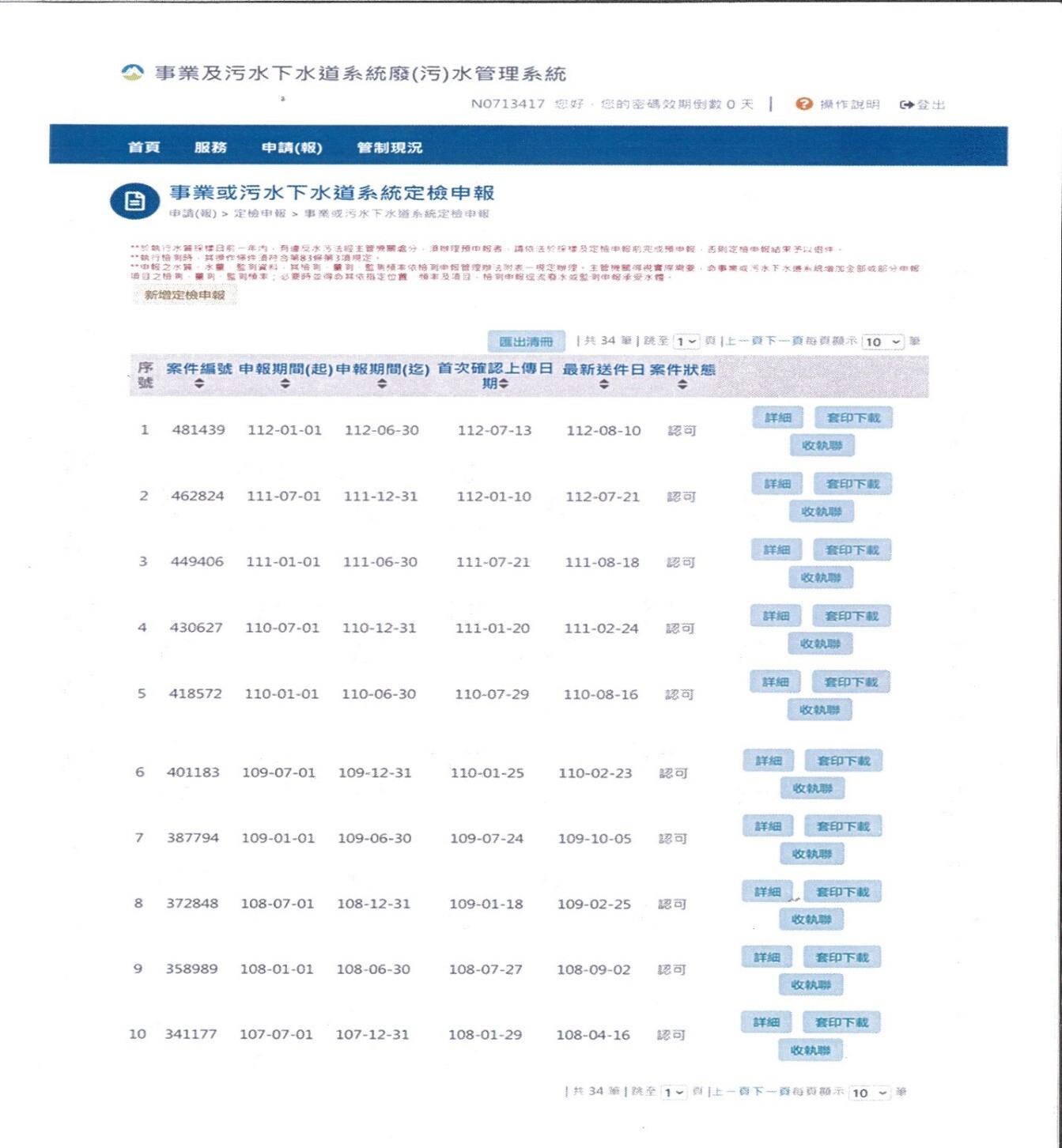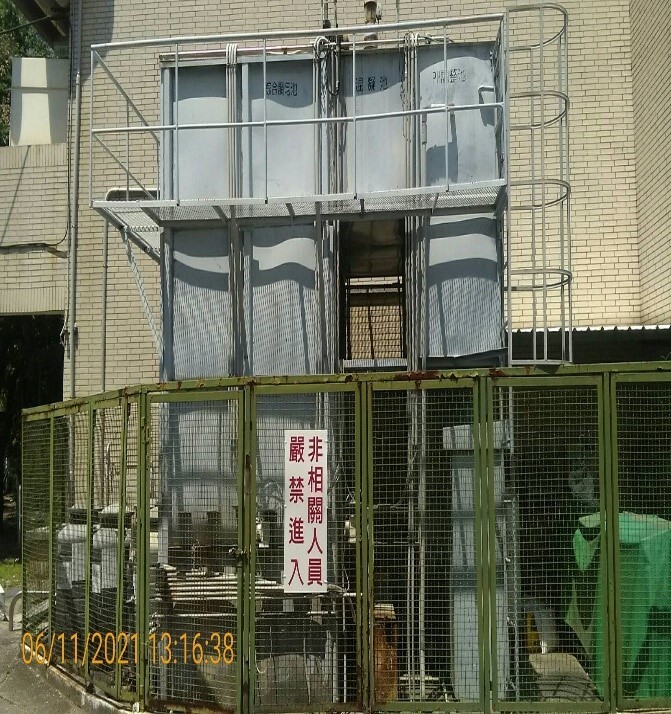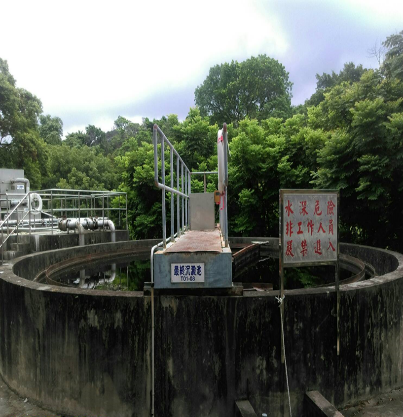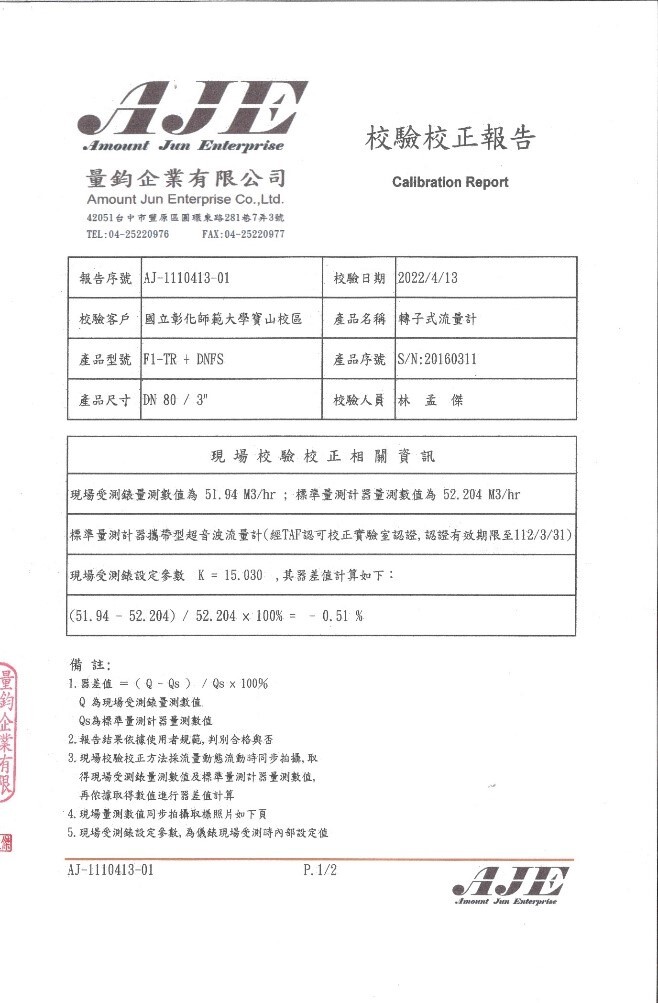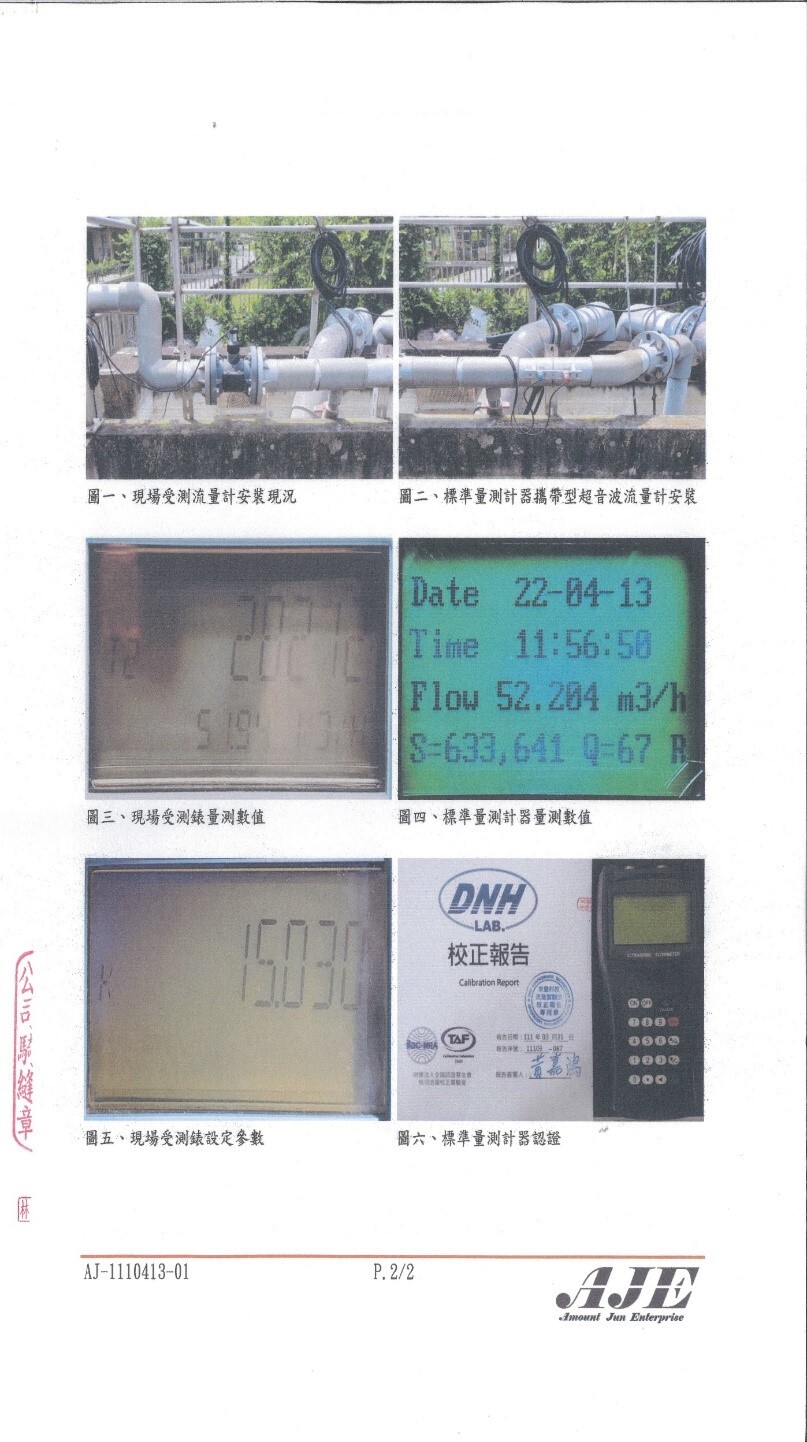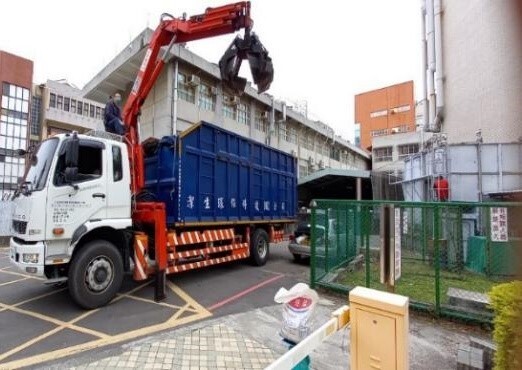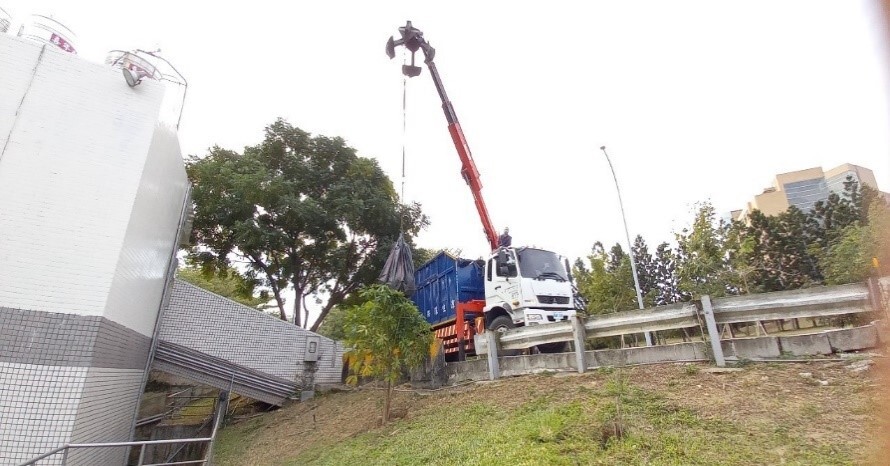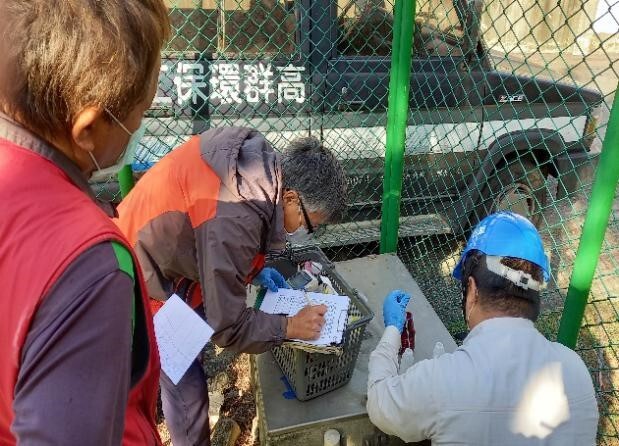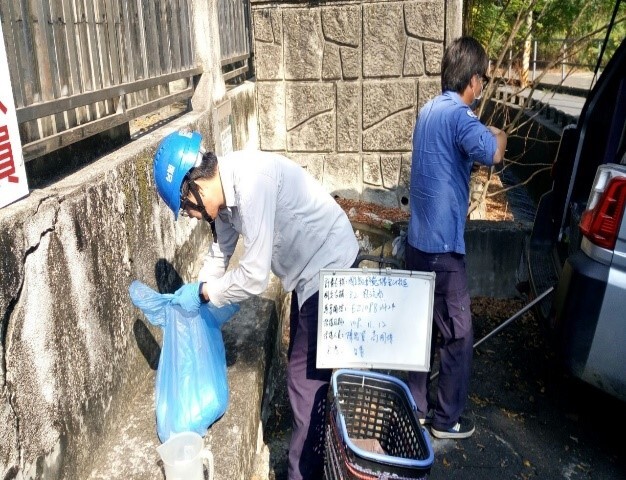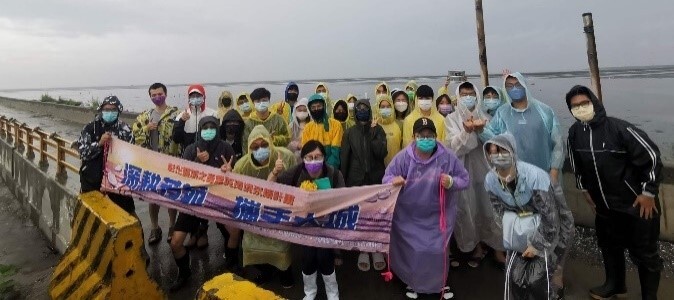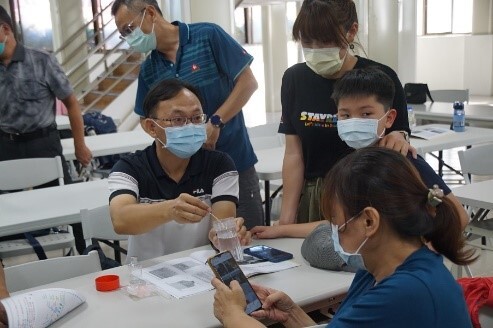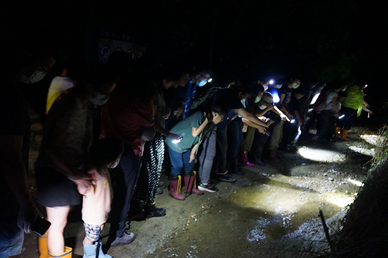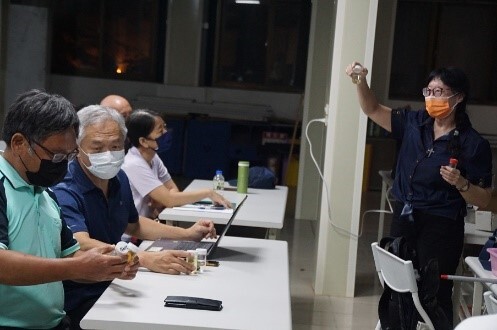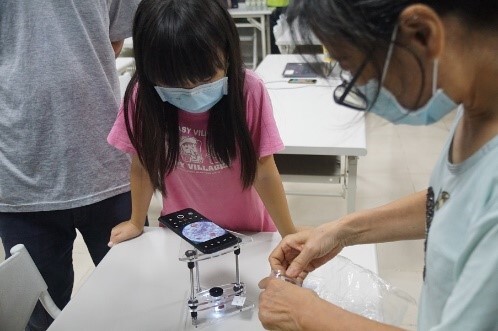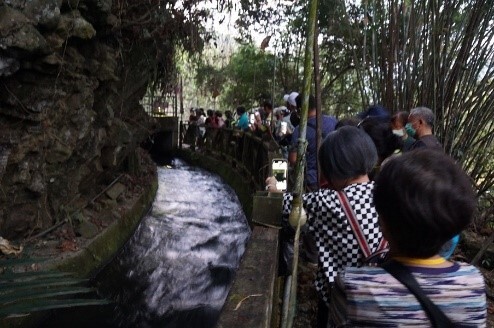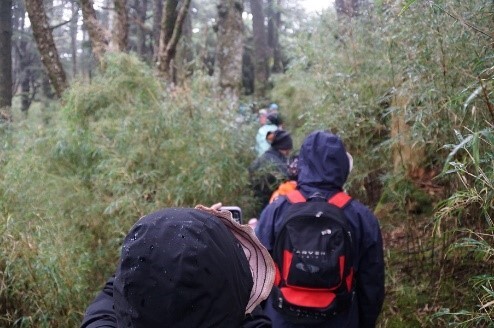SDG 14.4.1 Water discharge guidelines and standards
Water quality and drainage standards are set for both NCUE campuses; the Environmental Education Center and the Science Education Center organize related activities.
1. NCUE has two campuses, namely Jinde and Baoshan, and the procedure is as follows:
(1)In accordance with the regulations of the Waste Disposal Act, the laboratory waste liquid of the Jinde campus is supposed to be cleaned and disposed of as industrial waste. Following application, the Environmental Protection Bureau of Changhua County Government approved the cancelation of the water pollution prevention and control permit of the Jinde campus and removed it from the management list of the government. The original sewage treatment facilities are still in normal operation.
(2)The Baoshan campus mainly treats general domestic sewage.
NCUE manages all generated effluent by routing it through a centralized wastewater treatment plant. The treated water is then discharged through outlets approved and regulated by the authorities. The university complies with the regulations outlined in the Water Pollution Control Act (Link:
https://law.moj.gov.tw/LawClass/LawAll.aspx?media=print&pcode=O0040001) and Water Pollution Control Act Enforcement Rules (Link:
https://law.moj.gov.tw/LawClass/LawAll.aspx?media=print&pcode=O0040002) in handling and reporting the discharge of wastewater. Every year in July, the University submits a report that includes the water quality testing results for both the raw wastewater and the discharged wastewater for the period from January to June of the current year. Additionally, in the following year, by January, the University submits a report that covers the water quality testing results for both the raw wastewater and the discharged wastewater for the period from July to December of the preceding year. These regular reports show compliance with the reporting obligations set forth in the Water Pollution Control Act and its implementing regulations.
Reporting website: Environmental Protection Permit Management and Information System of the Environmental Protection Administration of the Executive Yuan (available at
https://www.moenv.gov.tw/page/614C0D67758AEF2B/e4a8e010-b810-4dca-91a4-c467a89c6047).
The following is a screenshot of NCUE’s reporting on the webpage of the “Waste/Polluted Water Management System for Businesses and Sewage Systems” (WPMIS) of the Environmental Protection Administration (EPA), as shown in Figure 1:
|
|
|
Figure 1. Screenshot of the webpage of NCUE on the EPA’s “Waste/Polluted Water Management System for Businesses and Sewage Systems” reporting page |
The maintenance photos of the wastewater treatment plant are shown in Figures 2-3.
|
|
|
|
Figure 2. Jinde Campus Sewage Treatment Plant |
Figure 3. Baoshan Campus Sewage Treatment Plan |
(3)According to the regulations of the Water Pollution Control Act, it is legally required to perform an annual calibration operation on the water meter for the effluent of the school’s wastewater treatment plant. The following Figure 4 and Figure 5 show the calibration and correction report of the school’s wastewater treatment plant effluent water meter issued by an inspection institution accredited by the EPA.
|
|
|
|
Figure 4. Calibration report of the water meter of NCUE’s wastewater treatment plant effluent water meter (Page 1) |
Figure 5. Calibration report of the water meter of NCUE’s wastewater treatment plant effluent water meter (Page 2) |
(4)Sludge removal and treatment operations, in compliance with the Water Pollution Control Act and Waste Disposal Act, related event photos as shown in Figures 6-7.
|
|
|
Figure 6. Sludge removal and treatment operation in Jinde Campus (NCUE) |
|
|
|
Figure 7. Sludge removal and treatment operation in Baoshan campus (NCUE) |
(5)Water quality is tested every six months, in compliance with the Water Pollution Control Act, related photos as shown in Figures 8-9.
|
|
|
Figure 8. Water quality testing in Jinde Campus (NCUE) |
|
|
|
Figure 9. Water quality testing in Baoshan Campus (NCUE) |
2. The Environmental Education Centre implements the “2020-2022 In-Depth Cultivation of Fangyuan, Working Hand in Hand with Dacheng: Industrial and Environmental Sustainability Plan of the Two Townships of Changhua County Project”.
Aquaculture production of Asian hard clams is environmentally friendly as carbon dioxide is absorbed in the process, thus curbing greenhouse gases and carbon emissions. Polyculture based on ecosystem functions can reduce the use of baits, save water, and decrease waste. Risks can be lowered, and quality and quantity can be improved with the use of intelligent aquaculture, such as cloud computing, artificial intelligence (AI), and big data analytics. New technologies form the core of the project, which helps implement innovative teaching that combines research courses, and teacher-student learning services, together with in-depth development and operation of aquaculture tourism in the fishing village to create and exploit new values of urban and rural development for both NCUE and the local industries, related event photos as shown in Figure 10.
|
|
|
Figure 10. NCUE’s teachers and students partnered with members of local groups to conduct a survey on the ecosystem and organisms in the coastal wetlands to establish a marine ecological database and monitor information related to economic fishery resources |
Facebook fan page of project-related activities: https://www.facebook.com/NCUEUSR/photos/?tab=album&ref=page_internal.
3. Related activities held by the Science Education Center:
The “Formosan Leaf-Nosed Bats of Baguashan and Bioluminescent Bacteria Outdoor Ecology Teacher Training” project, in collaboration with the Shipai Community Development Association in Changhua City organized an ecological enhancement training event for teachers and ecological volunteers in Changhua. The activities took place on the Shipai Riverside Trail and included sessions on “Introduction to Baguashan Plateau Grey-Faced Buzzard and Water Quality Analysis”, “Nocturnal Animals and Bioluminescent Fungi in Shipai”, “Introduction to Formosan Leaf-Nosed Bats and Experiential Activities” and “Outdoor Nighttime Ecology Observation on the Shipai Riverside Trail”. The image above shows activities such as water quality testing on the Shipai Riverside Trail, an introduction to Formosan Leaf-Nosed Bats, and hands-on experiences with nocturnal animals, related event photos as shown in Figure 11.
|
|
|
Figure 11. Activity Experiences |
The “Ecological Enhancement Training for Teachers and Ecological Volunteers in Changhua” was jointly organized by Changhua City’s Shipai Community Development Association. The training consisted of five evening sessions on Wednesdays and took place in the Shipai Community. The activities included “Flora of Baguashan”, “Introduction to River Benthic Organisms”, “Frog Ecology and Survey Methods”, “Butterflies of Baguashan” and “Amorphophallus and Smartphone Microscopy Techniques”. The images above illustrate activities related to recognizing river benthic organisms, frog ecology and surveys, and Amorphophallus plants and smartphone microscopy techniques, related event photos as shown in Figure 12.
|
|
|
Figure 12. Workshops and experiments |
The “Ecological Enhancement Training for Teachers and Ecological Volunteers in Middle and High Altitude Ecology Outdoor Learning and Enrichment Activity- Lianhua Pond and Hehuanshan Ecological Park” and the Changhua Shipai Community Development Association co-organized the Ecological Enhancement Training for Teachers and Ecological Volunteers in Changhua. The activities at Lotus Lake and Hehuanshan included “Introduction to Glacial Relict Plants in Alpine Areas”, “Observation of Taiwan’s Extremely Rare Parasitic Plant Mitrastemon kanehirai”, “Ecological Techniques of Nuomi Bridge and Experience with Formosan Leaf-Nosed Bats on Shenxian Island”, “Survey Methods and Ecological Introduction to Snails”, “Outdoor Ecological Teaching in Fir Forest Ecosystems” and “Outdoor Ecological Teaching in Yushania niitakayamensis Forest Ecosystems”. The images above show activities related to experiencing Formosan Leaf-Nosed Bats on Shenxian Island, observing Taiwan’s extremely rare parasitic plant Mitrastemon kanehirai at Lotus Lake, and outdoor ecological experiences in Hehuanshan’s fir forest ecosystem, related event photos as shown in Figure 13.
|
|
|
Figure 13. Outdoor experiences |

